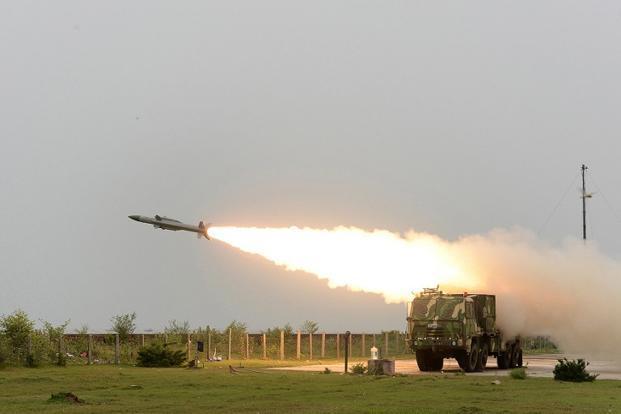India is Buying Latest weapons Tech From BOTH Russia & the West While Developing Own

The Government of India since 1914 has been taking steps to make India a powerhouse of weapons manufacturing. Though we have started exporting to other countries It will take some time before India is fully established in this field. Catching up with China in mass manufacturing is a task that will take some time. Funds for research and development are still a small fraction of India’s $66 billion overall defense budget. Not only the defence budget needs to be increased, we need to pour some more money into our research and development.
For the time being, India is maintaining its relative advantage over its neighboring adversaries Pakistan and China by imports from a diverse set of suppliers. After acquiring these we have been successfully integrating these foreign weapons into our own systems. We have gained tremendous expertize in this and this will meet our immediate needs.
Presently India is the second largest arms importer and purchases the latest equipment from both Russian and Western manufacturers to meet its military needs – and this makes India unique among modern armies.
“We make the greatest weapons ever made…and we’re dealing now with India,” US President Donald Trump told a cheering crowd at the ‘Namaste Trump’ event in the Indian city of Ahmedabad last week, as he shared the stage with India’s Prime Minister Narendra Modi.
Indeed, India was named a “Major Defense Partner” by the United States in 2016 and Washington has since been keen to provide New Delhi with its most advanced weapons systems. This made the signing of a new deal for 24 MH-60 ‘Romeo’ naval multi-mission helicopters and six additional AH-64E Apache attack choppers – valued at about $3 billion – a highlight of the US president’s recent trip.
There are more deals in the pipeline, too. India will procure the US’ Integrated Air Defense Weapon System (IADWS) with an almost $2 billion price tag, and a fleet of armed ‘Predator’ drones. These purchases could bring the total value of India’s arms deals with Washington over the $20 billion mark this year, making the US its second-biggest arms supplier.
Yet this relationship is a new one. India has traditionally looked closer to home to satisfy its military needs – to the mighty Soviet Union. Though a founding member of the Non-Aligned Movement during the Cold War, India has long relied on Russian arms imports. Today, Russian weaponry accounts for roughly 60-70 percent of India’s arms imports.
And business only blossomed further after the fall of the Berlin Wall. Defense deals between Russia and India are set to exceed $16 billion. The latest orders include the S-400 air-defense system, joint production of Kalashnikov rifles and Kamov helicopters for the navy.
During the recent DefExpo 2020 exhibition in Lucknow, New Delhi signed 14 memorandums of understanding with Russian firms for the development and production of land, air and naval systems.
Despite some challenges, India has been able to successfully integrate systems from across the world, including both the US and Russia — two major military competitors and geopolitical adversaries. This ability to balance relations between rival superpowers has led to India being dubbed a ‘swing power’ by some experts.
This has not been the case for everyone. When Turkey, a NATO member, tried to do the same and purchased Russia’s S-400 air defense system, it was quickly dropped from the F-35 stealth fighter program and warned by Washington that the acquisition could trigger further US sanctions.
So why does the US take a softer approach with India? After all, there are several areas the two countries don’t see eye to eye on. President Trump has accused India of treating the US “very unfairly” on trade, his administration has used sanctions to strong-arm India into dropping Iranian oil imports, and some of Prime Minister Modi’s policies – like the controversial Citizenship Amendment Act – have angered lawmakers in Washington.
The answer is geopolitical. For the US, India represents a bulwark against a rising China. A modernized Indian military, armed with “the absolute finest” American weapons, to quote Trump, is a useful friend indeed, as Beijing flexes its military muscle in the Indian Ocean.
India opposes China’s ‘Belt and Road Initiative’ – an uber-ambitious global infrastructure project that would link China’s ports with the rest of Asia, Europe, Africa and Latin America – and has booted Chinese vessels out of its waters near the strategic Andaman and Nicobar Islands as recently as December. In 2017, Chinese troops found themselves in an 73-day armed standoff with the Indian Army at Doklam, along the border with Bhutan and finally had to retreat.
This willingness to confront China benefits Washington, whose official National Defense Strategy views Beijing as “predatory” and a “strategic competitor.” Meanwhile, by purchasing American weapons, India gets to maintain its military advantage over Pakistan, and remind Beijing that any attack on India will invite equal amount of devastating retaliatory punishment.
Moreover, buying military equipment from all over the world India poses its own challenges in terms of integrating diverse systems and sourcing spare parts. “A country of India’s size cannot entirely depend on imports,” Modi said at the DefExpo.
To counter this, India has increased its own indigenization efforts of crucial technology in recent decades with an eye to meeting long-term requirements.
Since 2014, Modi has sought to promote the domestic defense industry under the ‘Make In India’ program, which aims to transform the country into a defense manufacturing hub and set an ambitious target of $1 billion in exports over the next five years.
This, of course, is a highly complex and expensive endeavor, requiring major investments and intensive research. As it stands, India’s military industrial complex is developing fast and it is increasing its capacity to produce sophisticated weaponry. With support from Russia, it has achieved self-sufficiency in areas like shipbuilding and missile technology.
It has also made impressive progress in indigenous development of its first fighter jet, the Tejas Mk1a, which will not only replace the Russian Mig-21 but will soon become the work horse if the IAF. Similarly BRAHMOS has provided a very lethal weapon to the Indian Navy, which can out class any Navy within the Indian Ocean Region.


